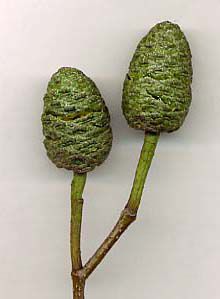-
 Enteric
Enteric
-
 H5N1
H5N1
-
 Resilient
Resilient
-
 Urine M&C
Urine M&C
-
 Dwarf star
Dwarf star
-
 Conglomerate
Conglomerate
-
 Oakley
Oakley
-
 Gastrulation
Gastrulation
-
 DVD-RW
DVD-RW
-
 xDSL
xDSL
-
 Alternative fuel
Alternative fuel
-
 PC-Card
PC-Card
-
 Andromeda galaxy
Andromeda galaxy
-
 Electrical resistance
Electrical resistance
-
 Terrestrial planet
Terrestrial planet
-
 Soft base
Soft base
-
 Bacteriostatic
Bacteriostatic
-
 Cross-certification
Cross-certification
-
 Hazardous waste
Hazardous waste
-
 Bayer name
Bayer name
-
 Möbius strip
Möbius strip
-
 Fibrinolysis
Fibrinolysis
-
 Van der Waals equation
Van der Waals equation
-
 Pelagic life forms
Pelagic life forms
-
 Viscoelasticity
Viscoelasticity
-
 Exobiology
Exobiology
-
 Nipah virus
Nipah virus
-
 Diamond
Diamond
-
 Lake Titicaca
Lake Titicaca
-
 Photoperiodism
Photoperiodism
Italian alder
The Italian alder has a beautiful, slender silhouette, an often conical structure, a height of 10 to 15 metres at adult age and heart-shaped leaves with pointed tips.

The Italian alder. © Franz Xaver Licence Creative Commons Attribution - Share Alike terms 3.0 Unported
Names
This species (Alnus cordata) is a member of the Betulaceae family. It is also called the "Corsican alder".
Botanical descriptions
The bark of this tree is smooth, grey, sprinkled with lenticels and short vertical cracks. Its trunk bleeds when it is split. Its deciduous leaves, alternate, tough and smooth, stay green for a long time in autumn.

Leaves, catkins and fruit. © Sten Porse Licence Creative Commons Paternity - Share Alike terms 3.0 Unported
This monoecious tree flowers from the month of February. Its male catkins hang, while its female catkins, with a discrete red pistil, point upwards at the end of branches. Its fruit are dark brown cones, 2 centimetres long, which contain small winged achenes dispersed by the wind.
Origins
The Italian alder is found essentially in Corsica and southern Italy, but can also grow in the Southern Alps, and in colder regions such as Champagne and Lorraine.
Growing conditions
This light loving species appreciates sunny areas and can grow in humid or dry environments, without any specific preference in terms of soil.
Use
The Italian alder can be used to enrich poor or humid soil, as its roots are covered with nodules that can synthesize nitrogen from the air. Foresters can therefore plant this tree in certain areas that need to be enriched. Its reddish orange woodis easy to work.
Author: Michel Caron

Fruit of the Italian alder. © MPF Free GNU documentation licence, version 1.2
Latest
Fill out my online form.



